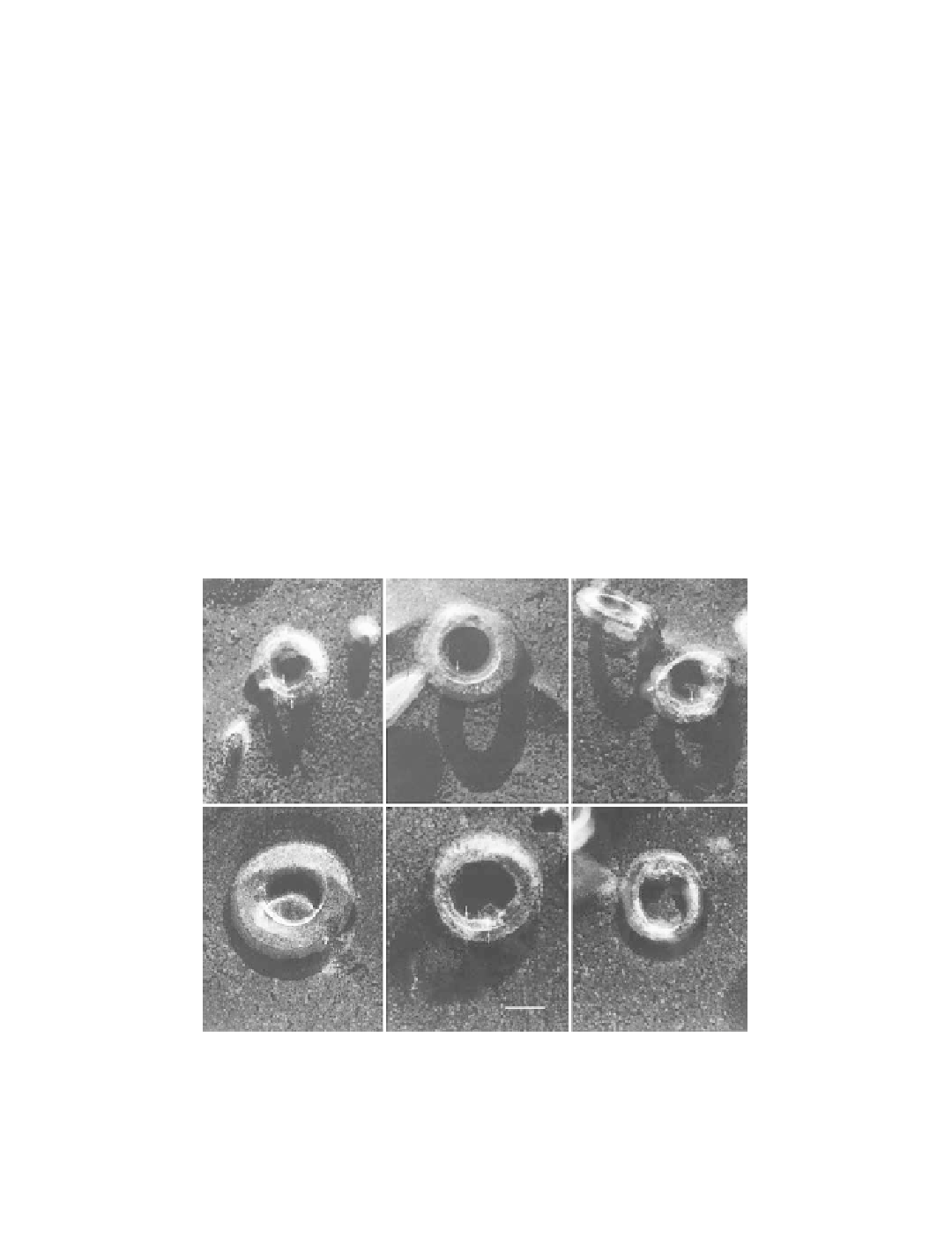Biomedical Engineering Reference
In-Depth Information
Self-assembly
is also involved in certain tertiary-structure DNA phase transitions. At low
DNA concentrations, these phase transitions involve intramolecular collapse from
the extended wormlike coil structure of DNA in solution to condensed insoluble states
characterized by maximized close packing of DNA double helical segments. While nor-
mally quite soluble in aqueous solution, the DNA polyanion can be driven to condense in
the presence of a critical solution concentration of trivalent cations (128). These
self-assem-
bled
charge-neutralized DNAs possess a high degree of order. They are similar in dimen-
sion and are therefore thought to resemble the collapsed state of DNA within native
bacteriophage heads and certain viral capsids (129). Self-assembly of DNA to condensed
states is also of more recent interest as potential packaging states for gene therapy deliv-
ery systems (130), where polymeric and lipid-based cations have been shown to induce
collapse of DNA into aggregates that cells readily take up from solution. At high concen-
trations and under appropriate solute conditions, DNA can also be driven to
self-assemble
via an intermolecular process into liquid crystalline ordered phases (131).
In a number of published experimental studies, we have reported on the
self-assembly
process involving trivalent counterion-induced intramolecular DNA collapse. This is a gen-
eral physical change of state induced by trivalent cations and is largely independent of the
size and specific DNA sequence used. Condensed DNA tertiary structures are produced
when a critical level of DNA charge neutralization, around 88-90%, is achieved by any
combination of solution cations (128). This charge neutralization level is consistent with
Manning's counterion condensation theory of polyelectrolytes (132). In a series of studies
(133-136), we have shown by high-resolution transmission electron microscopy (TEM) that
condensed DNA forms toroidal-shaped structures about the size of a bacteriophage head
(a)
(b)
(c)
(d)
(e)
(f)
400Å
FIGURE 1.43
Toroidal DNA condensates formed by condensing
-174 RFII:
Xho
I-digested linear plasmid DNA with the
organic trivalent cation spermidine
3
. Images are from transmission electron microscopy (TEM) carried out on
freeze fracture-deep etched specimens with low metal deposition level (Pt/C 0.9 nm thick). Reprinted from Marx,
K.A., Ruben, G.C. (1986). A Study of PhiX-174 DNA Torus and Lambda DNA Torus Tertiary Structure and the
Implications for DNA Self-Assembly.
J. Biomol. Struct. Dynamics
4:23-39. With permission from Adenine Press.

